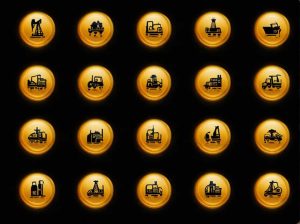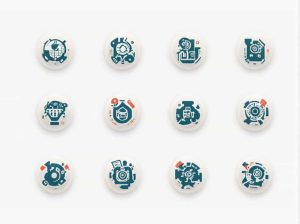Every decision we make comes with a trade-off. Whether choosing a career making an investment or simply deciding how to spend our time we must weigh the costs and benefits of each option. This concept is at the core of opportunity cost—the value of what we give up when making a choice.
Rational decision-making plays a crucial role in maximizing benefits and minimizing costs. Understanding opportunity cost helps individuals and businesses make smarter economic choices. In this topic we will explore the importance of opportunity cost how rationality influences decision-making and the balance between costs and benefits.
1. Understanding Opportunity Cost
What is Opportunity Cost?
Opportunity cost refers to the value of the next best alternative forgone when making a decision. In simple terms it is what you sacrifice when choosing one option over another.
Examples of Opportunity Cost
✔ Education vs. Work: Choosing to go to college means giving up potential income from a full-time job. The opportunity cost is the money you could have earned.
✔ Investing vs. Saving: Putting money in the stock market may yield high returns but the opportunity cost is the security of keeping that money in a savings account.
✔ Time Management: Spending an hour watching TV means losing the opportunity to read a book or exercise.
Recognizing opportunity costs allows individuals and businesses to make informed choices that align with their goals.
Explicit vs. Implicit Costs
✔ Explicit Costs – Direct measurable expenses (e.g. tuition fees rent wages).
✔ Implicit Costs – Indirect non-monetary sacrifices (e.g. time lost experience missed networking opportunities).
Both explicit and implicit costs play a role in opportunity cost analysis.
2. Rational Decision-Making in Economics
What is Rationality?
In economics rationality means making decisions that maximize benefits and minimize costs. A rational decision-maker:
✔ Evaluates all available options.
✔ Considers opportunity costs.
✔ Chooses the option with the greatest net benefit.
However human behavior is not always perfectly rational. Psychological factors biases and emotions often influence decision-making leading to suboptimal choices.
Bounded Rationality: When Decisions Are Limited
In reality decision-makers face limitations such as:
✔ Incomplete Information – Not all future outcomes are known.
✔ Cognitive Limitations – The brain can only process so much data at once.
✔ Time Constraints – Decisions often need to be made quickly.
This leads to bounded rationality where people make satisfactory but not necessarily optimal choices.
How to Make Rational Decisions
✔ Identify all possible alternatives before making a choice.
✔ Weigh opportunity costs by considering what is sacrificed.
✔ Analyze long-term vs. short-term benefits.
✔ Minimize emotional biases in decision-making.
By following these principles individuals and businesses can enhance their economic decision-making process.
3. Weighing Costs and Benefits
The Cost-Benefit Analysis Framework
A cost-benefit analysis (CBA) is a structured approach to comparing gains and losses before making a decision. It involves:
✔ Listing all potential costs (both explicit and implicit).
✔ Calculating expected benefits from each option.
✔ Choosing the alternative with the highest net benefit.
Real-World Examples of Cost-Benefit Analysis
✔ Starting a Business: An entrepreneur must evaluate whether the potential profits outweigh startup costs and risks.
✔ Government Policies: Governments use cost-benefit analysis when deciding whether to invest in infrastructure healthcare or education.
✔ Personal Finance: Before making a large purchase individuals compare the cost of an item to its long-term value.
By understanding the trade-offs between costs and benefits decision-makers can make more strategic economic choices.
The Risk Factor in Cost-Benefit Analysis
Some decisions involve uncertainty. For example:
✔ Investing in Stocks: Potential for high returns but also high risk.
✔ Starting a New Career: Opportunity for better income but risk of failure.
✔ Buying a Home: Financial security but long-term debt commitment.
In these cases decision-makers must assess risk tolerance and long-term consequences before committing to an option.
4. Opportunity Cost in Business and Finance
How Businesses Use Opportunity Cost
Companies constantly evaluate opportunity costs to maximize profitability and efficiency.
✔ Production Choices: Should a company invest in new machinery or hire more employees?
✔ Marketing Strategies: Should a business spend money on social media ads or traditional marketing?
✔ Product Development: Should a company launch a new product or improve existing ones?
By analyzing opportunity costs businesses ensure that resources are allocated in the most effective way.
Opportunity Cost in Investments
Investors must choose between:
✔ Stocks vs. Bonds – Stocks have higher potential returns but bonds offer stability.
✔ Real Estate vs. Cryptocurrency – Real estate provides long-term security while cryptocurrency offers high-risk high-reward opportunities.
✔ Short-Term vs. Long-Term Investments – Balancing immediate gains vs. future benefits is key.
A well-calculated opportunity cost analysis helps investors make informed financial decisions.
5. Psychological Factors in Decision-Making
Common Biases Affecting Rational Choices
Humans are not always rational decision-makers. Some cognitive biases that influence opportunity cost analysis include:
✔ Sunk Cost Fallacy – Continuing a failed investment just because money has already been spent.
✔ Loss Aversion – Fearing losses more than valuing potential gains.
✔ Overconfidence Bias – Believing an outcome will be more favorable than reality suggests.
Recognizing these biases can help individuals and businesses make more rational economic decisions.
Overcoming Biases in Opportunity Cost Evaluation
✔ Take an objective approach – Avoid emotional attachment to decisions.
✔ Gather more information – Reducing uncertainty helps make better choices.
✔ Use data and logical reasoning – Facts outweigh feelings in financial and economic decision-making.
By addressing these biases individuals and businesses can improve their ability to assess opportunity costs accurately.
Making Smarter Economic Decisions
Opportunity cost plays a fundamental role in personal finance business strategy and economic policy. By understanding the trade-offs involved in every decision individuals and organizations can optimize resources reduce risk and achieve better long-term outcomes.
To make rational choices that maximize benefits and minimize costs it is essential to:
✔ Identify the next best alternative before making a decision.
✔ Analyze short-term and long-term trade-offs.
✔ Use cost-benefit analysis for strategic planning.
✔ Recognize and overcome psychological biases in decision-making.
In a world of limited resources and infinite possibilities mastering the concept of opportunity cost allows us to make better financial business and personal choices. Understanding rationality costs and benefits is the key to thriving in today’s economy.



